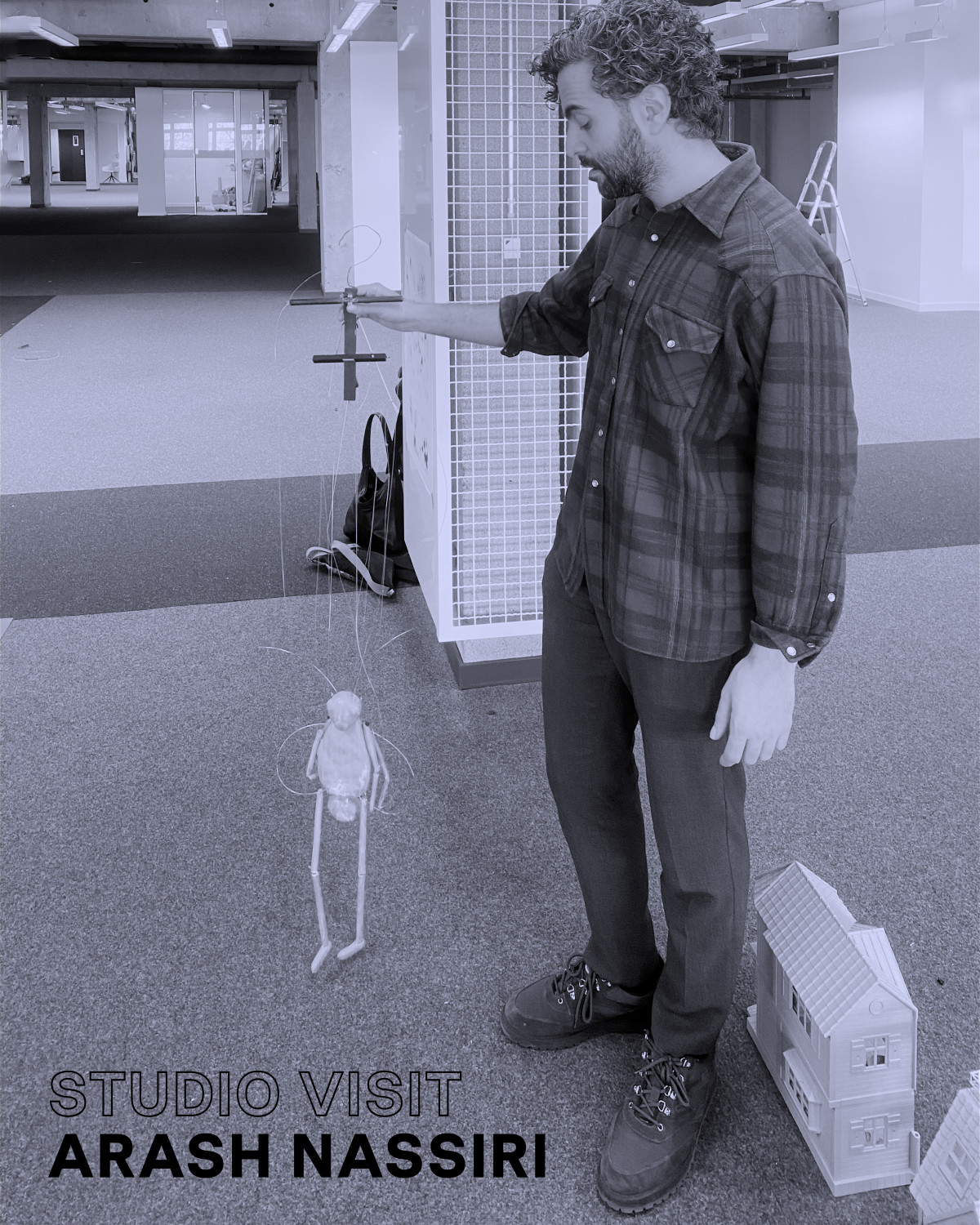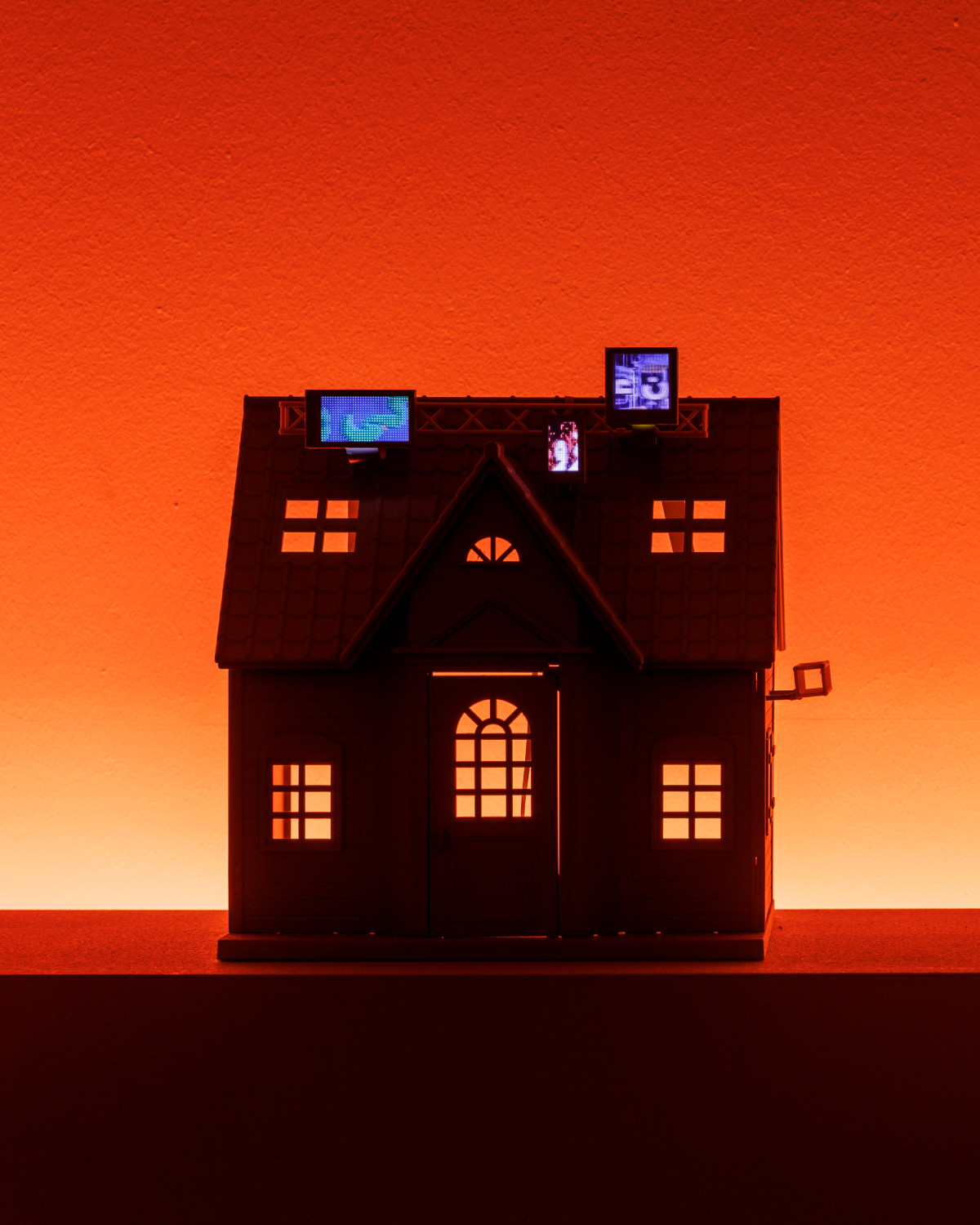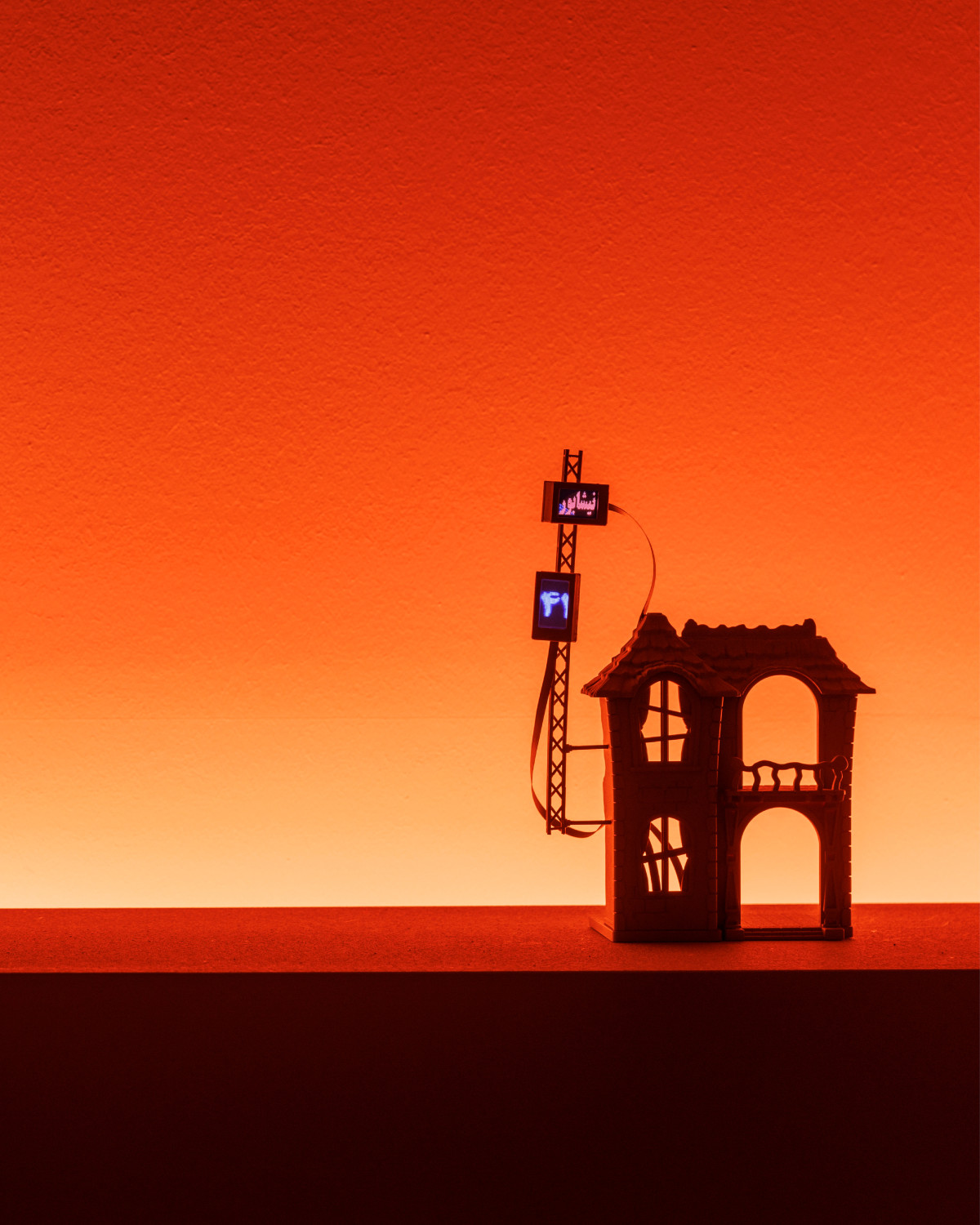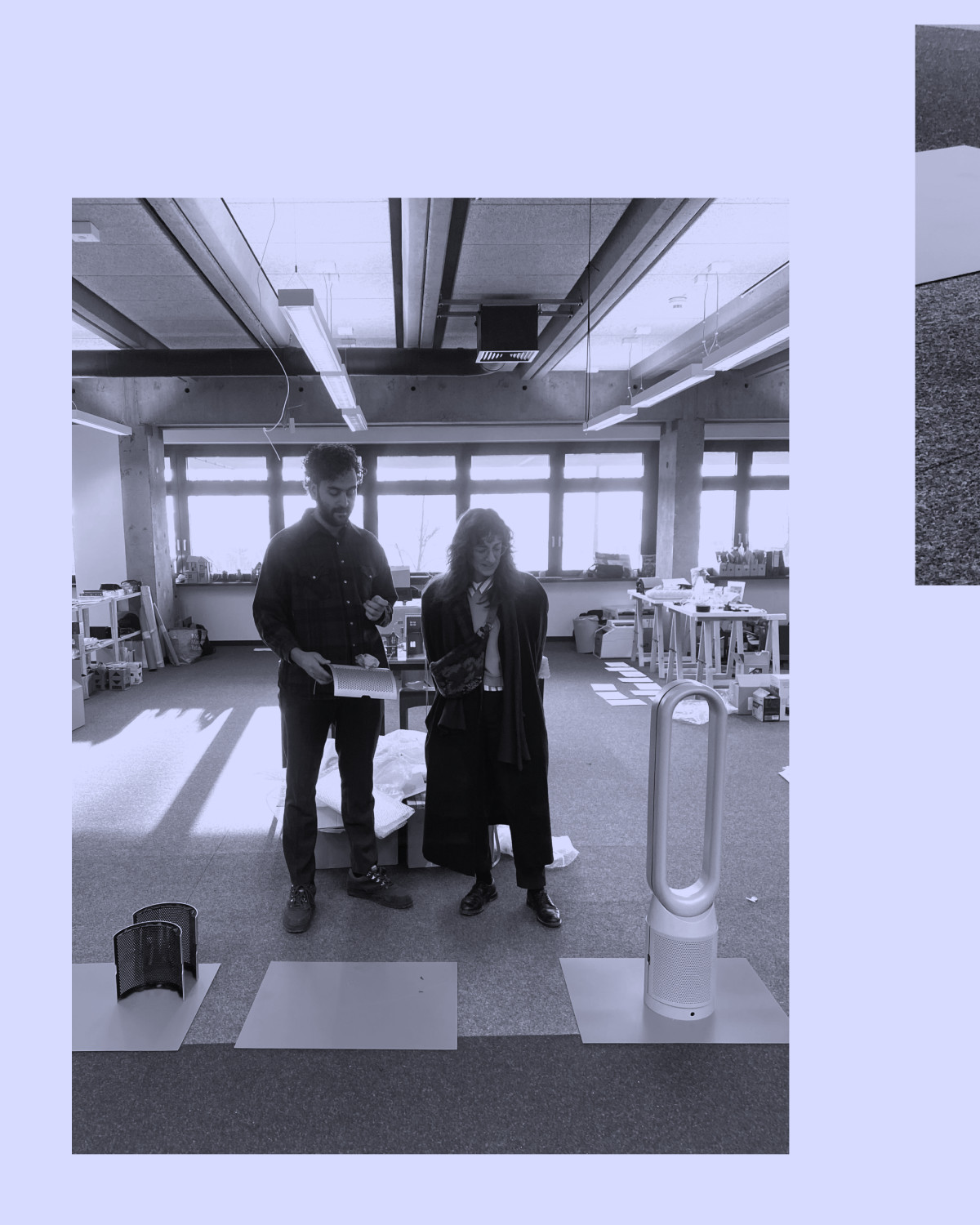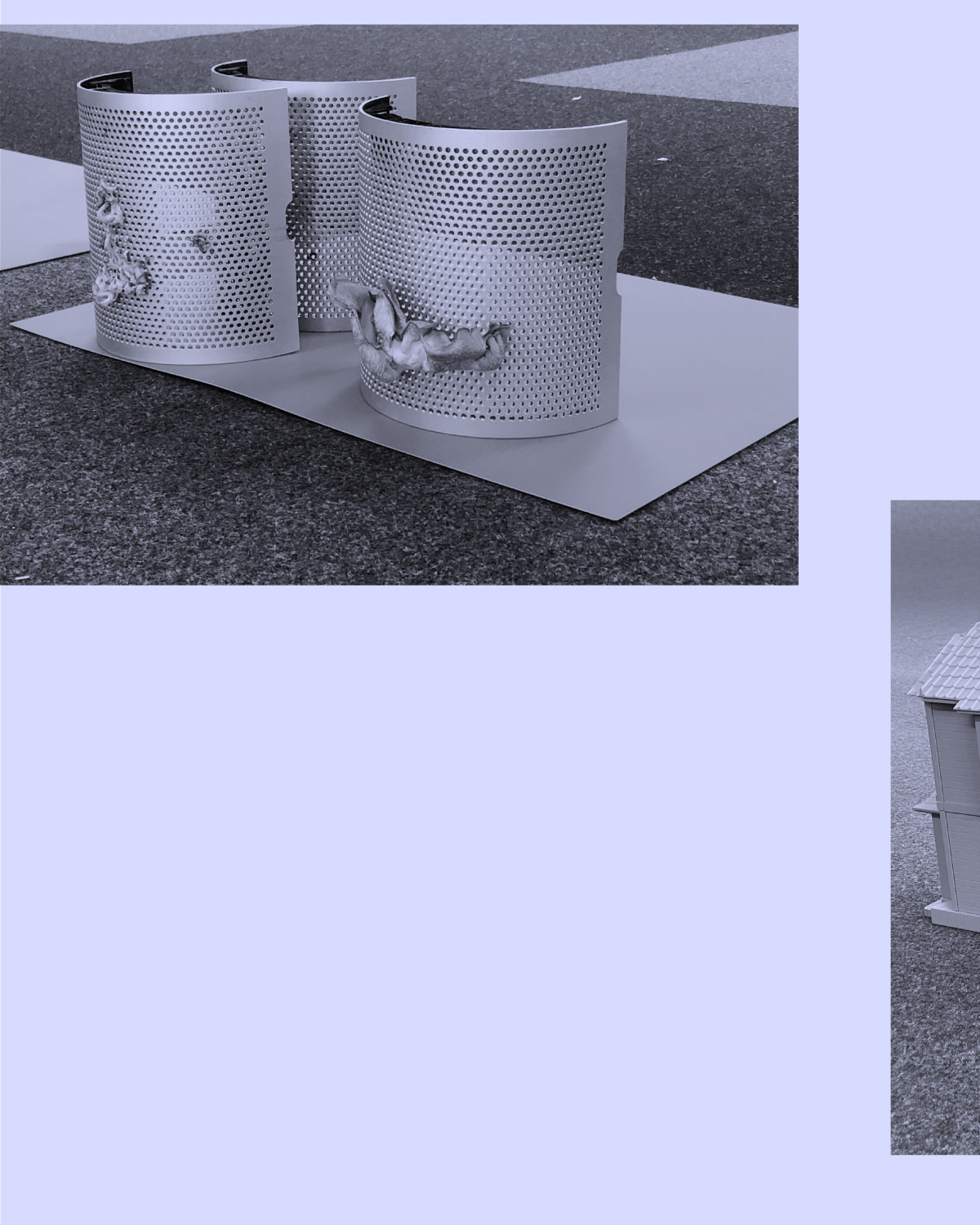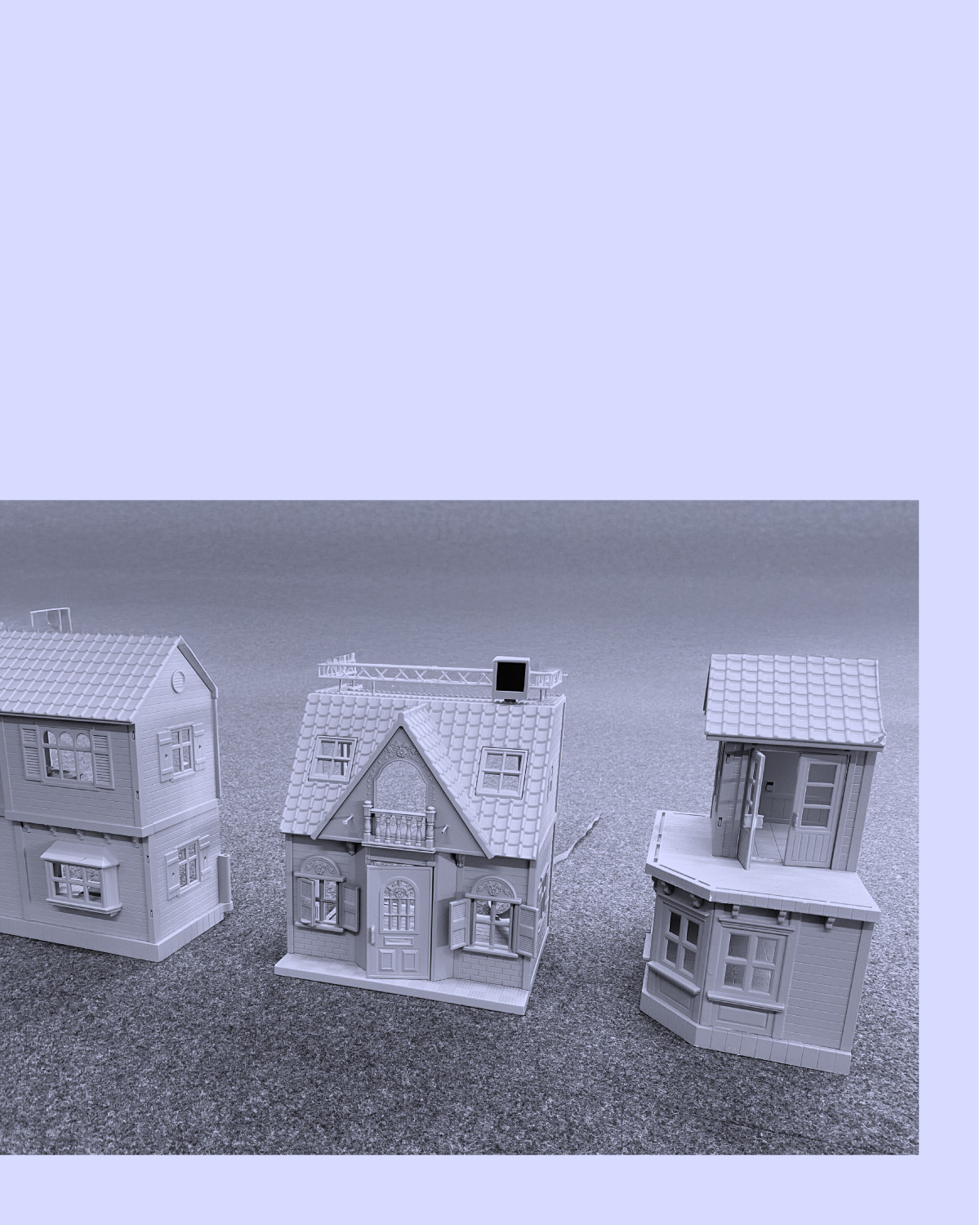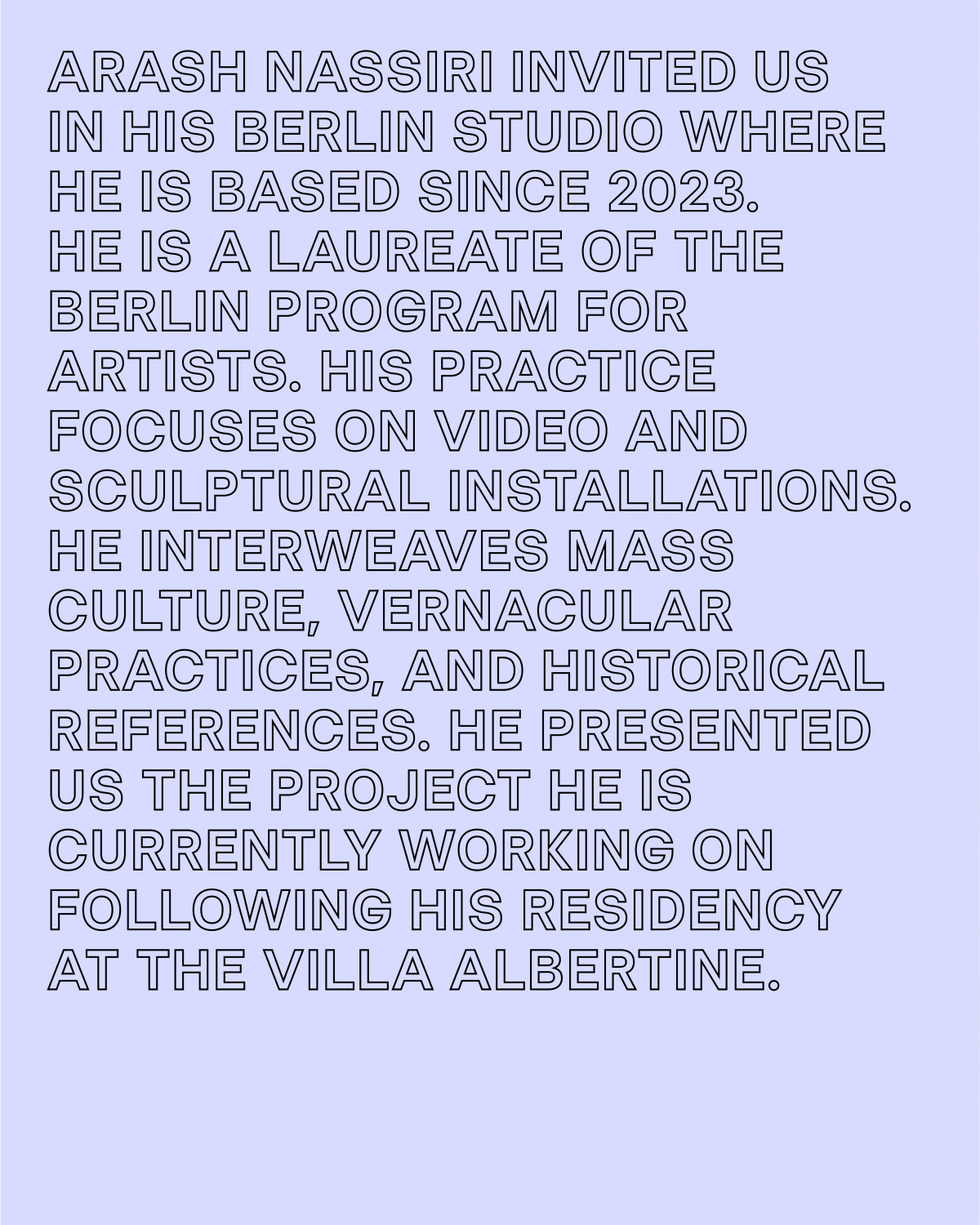Arash Nassiri (b. 1986, Tehran, Iran) is a laureate of the Berlin Program for Artists and has been based since 2023. Focusing on video and sculptural installations, he interweaves mass culture, vernacular practices, and historical references.
For this studio visit, he presented his ongoing project developed following his residency at the Villa Albertine. The central figure is an insect puppet who invades Iranian diaspora villas in Beverly Hills, Los Angeles. This project reveals the story of this architectural style invented in LA in the 1990s, which was banned in 2008. The layered artistic influences in these palatial structures pay tribute to an Iranian bourgeois aesthetic, itself shaped by 17th-century French decorative traditions. They embody a desire to reconstruct a lost heritage of prestige through the act of home-making abroad, while incorporating Western domestic standards, demonstrating a certain economic wealth. These “forbidden” houses built by a diaspora are seen through the eyes of an invasive insect - often not allowed in a house. This forms a “mise en abyme” of displacement and the longing to establish a home, and questions the social status of cultural artifacts.
The artist's studio also houses the installation ‘Untitled’, presented as part of the Berlin Programme for Artists (BPA) 2024 exhibition, which uses Sylvanians dollhouses, whose design mimics the style of English cottages, even though they are manufactured and distributed by a Japanese toy brand. These tiny doll houses are transformed into ghostly scale models. On the facades, miniature replicas of LED animation panels relay advertising messages in Persian. Here, Nassiri highlights this Iranian popular practice that develops its own visual language. By displacing these fragments of the Tehran nightscape into an art space, he introduces junk imagery that is intended to be of low quality in the setting of an institution where the public gaze must evaluate the quality of the works. What emerges is a dialogue between heterogeneous spheres: the memorial landscape of childhood, the visual code of advertising, and the discursive space of global contemporary art.



